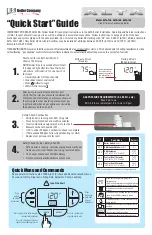
September
2012 Page
35
**PRESSURE (SAFETY) RELIEF VALVE **
Failure to re-inspect the pressure relief valve as directed could result in unsafe pressure buildup, which can result in
severe personal injury, death or substantial property damage.
AT LEAST ONCE A YEAR:
Pressure relief valves
must be operated
to ensure that waterways are clear. Certain naturally
occurring mineral deposits may adhere to the valve, rendering it inoperative. When manually operating the lever, water
will discharge and precautions must be taken to avoid contact with hot water and to avoid water damage. Before oper-
ating lever, check to see that a discharge line is connected to this valve directing the fl ow of hot water from the valve to
a proper place of disposal, otherwise severe personal injury may result.
IF NO WATER FLOWS, VALVE IS INOPERATIVE. SHUT DOWN THE APPLIANCE UNTIL A NEW RELIEF VALVE HAS BEEN INSTALLED.
AT LEAST ONCE EVERY THREE YEARS:
Safety Relief Valves should be re-inspected by a licensed plumbing contractor
or authorized inspection agency, to ensure that the product has not been aff ected by corrosive water conditions and to
ensure that the valve and discharge line have not been altered or tampered with illegally. Certain naturally occurring
conditions may corrode the valve or its components over time, rendering the valve inoperative. Such conditions are not
detectable unless the valve and its components are physically removed and inspected. This inspection must only be
conducted by a plumbing contractor or authorized inspection agency —not by the owner.
VERIFY SYSTEM PRESSURE FOLLOWING TESTING OF RELIEF VALVES. ADD WATER TO SYSTEM AS NECESSARY.
Failure to inspect and repair the above conditions can result in severe personal injury or death.
MAINTENANCE (CONT.)
DANGER








































